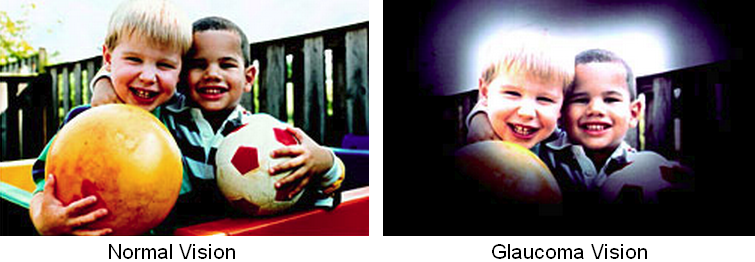
Source: National Eye Institute, NIH
This graph provides a frightening look at a problem that could threaten the vision of more than 6 million Americans by 2050: glaucoma. Glaucoma is a group of diseases that damage the eye’s optic nerve — a bundle of 1 million-plus nerve fibers connecting the light-sensitive retina to the brain — and that can lead to vision loss and blindness.
NIH research is trying to change this picture by developing better strategies for treatment and prevention. But you can also help. How? By getting your eyes checked regularly.

Source: National Eye Institute, NIH
With early detection and treatment, serious vision loss can often be prevented. Anyone can develop glaucoma, but some folks are at higher risk:
- African Americans over age 40
- Everyone over age 60, especially Mexican Americans
- People with a family history of glaucoma
Glaucoma often has no symptoms until a lot of damage has already been done. So the best way to prevent a bad outcome from glaucoma is by undergoing a simple eye exam that can be done by an ophthalmologist or an optometrist — at least once every 2 years for people in high-risk groups.
Source: National Eye Institute, NIH



 Get new blog posts by email
Get new blog posts by email
Thanks you for this article, it is so important to keep up with eye check-ups. … Hopefully, this disease someday, will be a disease of the past.
Good warning article,but how about early signs and symptoms for the public to be looking for? Thanks
Thanks for your comment, Brandon.
In the earliest stages of the glaucoma, people have normal vision and no pain. But, as the disease progresses, side vision may gradually fail. That is, objects in front may still be seen clearly, but objects to the side may be missed. As glaucoma worsens, the field of vision narrows and people can become blind. To learn more about this vision-threatening disease, go to: http://www.nei.nih.gov/glaucoma/
Thank you very much for these data. Can you direct me to a database indicating what percentage of each group has glaucoma?
Hi, Randall,
Prevalence rates for glaucoma by age and race/ethnicity can be found on this National Eye Institute web page: http://www.nei.nih.gov/eyedata/glaucoma.asp
Hope this helps!
Judging from Dr. Collins’ account, inroads against glaucoma could be made by including glaucoma checks in the annual “wellness” checkups that are now part of the Affordable Care Act (ACA). I hope Dr. Collins will use his influence to convince the President and the HHS Secretary to cover such glaucoma exams within the ACA.
Scary! Thanks a ton for the informative article. Can’t imagine such a situation of blindness! Certainly eye care has to be taken seriously!